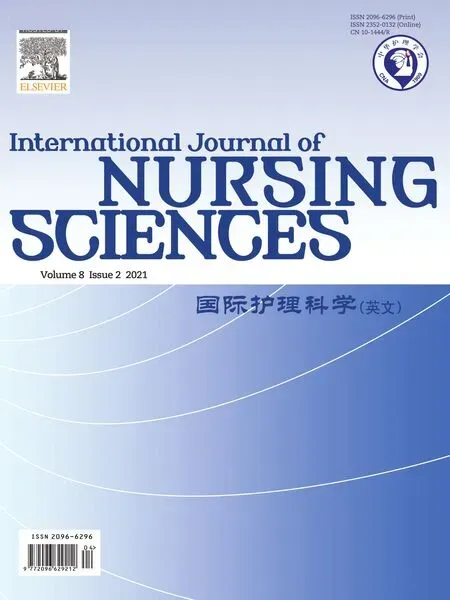Supplement to the published paper“Theory-guided interventions for Chinese patients to adapt to heart failure:A quasi-experimental study”
We appreciate the question raised in a discussion with a reader and the editor about an instrument for outcome measure of the quality of life among people with chronic heart failure [1].We recognized that we should have described more details about how to convert the score of the Minnesota Living with Heart Failure Questionnaire(MLHFQ).Lack of scoring details might lead to some confusion to understand the results of this study.We thank the International Journal of Nursing Sciences for the opportunity to provide further information to clarify the process of data analysis and research findings.
The MLHFQ is a well-developed scale for investigating patients’everyday living problems relevant to heart failure and their impacts on physical activity,social interaction,sexual activity,and emotions.As recommended,the total score of MLHFQ can be calculated by summating the response to all questions,and score for each domain can be done similarly (see Table 1).A higher score means a worsening quality of life.
We obtained permission to use the Chinese version of MLHFQ in our study from the University of Minnesota officially and Dr.Zhu,who was responsible for translation and validation of the Chinese version.We mentioned the scoring process in the Data Analysis Section,“As per the scoring manual,raw scores from the SCHFI were tabulated into standardized 100-point scales,as well as the MLHFQ.”(P395,[1])Due to the word limitation,we did not present the calculating details and relevant scoring rules.We appreciate Dr.Zhu [2-4]for providing a scoring manual of the Chinese version scale.As shown in Table 1,the converted score was calculated by(Maxrawscore-measured score)/Max raw score × 100.We used converted scores to present our findings considering the cultural adaptation.A higher score means a better quality of life.And in this study,the score of MLHFQ was used to assess self-concept adaptation.
Raw scores and converted scores of the MLHFQ are listed in Table 2 for comparison.Patients in the intervention group got significant reductions in all the outcomes measured by the MLHFQ.According to the rule that a lower raw score predicting a betterquality of life,our theory-guided interventions are beneficial to individuals’self-concept adaptation.The explanation of the efficiency of our study is as same as that we presented in the published article.

Table 1 MLHFQ scoring and conversion used in this study.

Table 2 Self-concept adaptation compared between the intervention and control groups at baseline and the sixth month (Mean ± SD).
We appreciate the keen reader for raising the question and editor for providing an opportunity to discuss it.It is important to support patients to adapt to heart failure.We will continue to improve the interventions and measures in our future studies.
Funding
This work was supported by Health Commission of Zhejiang Province (grant number WKJ-ZJ-1925 and 2019ZD034).
Declaration of competing interest
None.
Acknowledgement
The authors thank the keen reader and editor of International Journal of Nursing Sciences.
 International Journal of Nursing Sciences2021年2期
International Journal of Nursing Sciences2021年2期
- International Journal of Nursing Sciences的其它文章
- Realities,scope,challenges,and facilitators for implementation of nurse practitioner’s role in India:A review
- Informal caregivers’ quality of life and management strategies following the transformation of their cancer caregiving role:A qualitative systematic review
- Reliability and validity of the Chinese version of the Work-Family-School Role Conflicts Scale among nurses
- Reliability and validation of the Arabic version of the Conditions for Workplace Effectiveness Questionnaire-II
- Reliability and validation of the Positive Aspects of Caregiving scale among Japanese caregivers of people with dementia
- Analysis of adversity quotient of nursing students in Macao:A crosssection and correlation study
